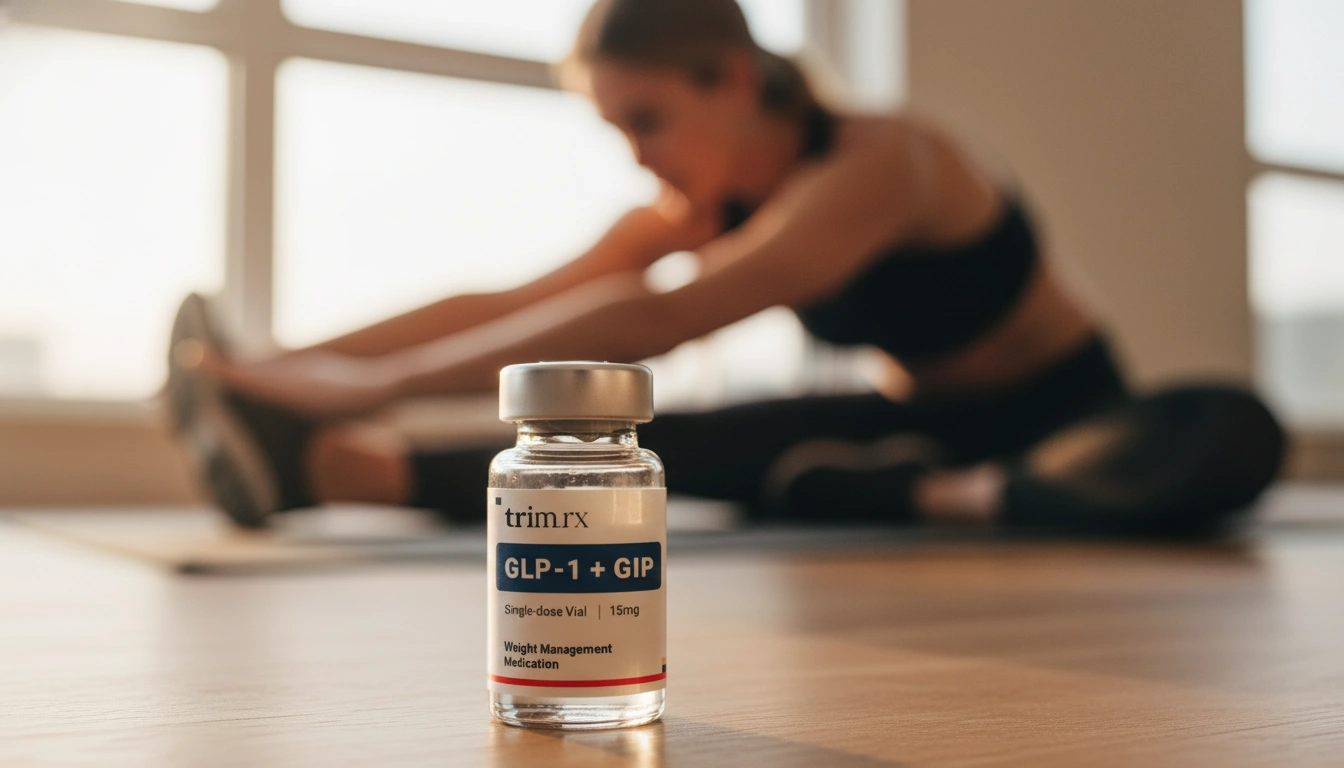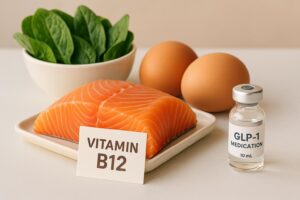How to Trigger GLP-1 Naturally for Better Health and Weight Management

Introduction
Did you know that a simple change in your diet could have a profound impact on your metabolism and appetite regulation? Glucagon-like peptide-1 (GLP-1) is a hormone produced in our gut that plays a crucial role in managing blood sugar levels and controlling hunger. As we navigate the complexities of health and wellness, understanding how to optimize GLP-1 production naturally can empower us to make informed dietary choices that support our weight management goals and overall health.
In recent years, GLP-1 has gained significant attention, particularly due to the rise of prescription medications that mimic its effects in treating obesity and type 2 diabetes. However, many people are still unaware of the ways they can enhance their body’s natural production of GLP-1 through food and lifestyle choices. This blog post aims to explore how we can trigger GLP-1 naturally, delving into the science behind it and offering practical strategies to integrate into our lives.
By the end of this article, you’ll gain a comprehensive understanding of what GLP-1 is, how it functions, and the dietary and lifestyle changes we can implement to boost its levels. Together, we will explore various foods, exercise strategies, and gut health practices that can enhance our GLP-1 production, ultimately leading to better appetite control and improved metabolic health.
Let’s embark on this journey to harness the power of GLP-1 for a healthier, more satisfying life.
Understanding GLP-1: The Hormone that Supports Metabolic Health
What is GLP-1?
GLP-1 is an incretin hormone secreted by the enteroendocrine cells in our intestines after we consume food. Its primary functions include:
- Stimulating Insulin Secretion: GLP-1 enhances the release of insulin from the pancreas, helping to lower blood sugar levels after meals.
- Slowing Gastric Emptying: By delaying the movement of food from the stomach to the intestines, GLP-1 prevents rapid spikes in blood sugar levels.
- Reducing Appetite: GLP-1 communicates with the brain to signal fullness, helping to control hunger and reduce food intake.
Given its multifaceted role in regulating blood sugar and appetite, it’s no wonder that GLP-1 has become a focal point in discussions about weight management and metabolic health.
The Role of Gut Health in GLP-1 Production
Our gut microbiome, the diverse community of microorganisms in our intestines, plays a significant role in GLP-1 production. Certain gut bacteria are involved in breaking down dietary fibers, leading to the production of short-chain fatty acids (SCFAs) and other metabolites that stimulate GLP-1 secretion. A healthy and diverse gut microbiome can enhance the body’s natural ability to produce GLP-1.
Why Focus on Natural Ways to Increase GLP-1?
While medications like semaglutide (found in Ozempic and Wegovy) and tirzepatide (Mounjaro and Zepbound) have demonstrated effectiveness in boosting GLP-1 activity, they are not suitable for everyone. Medications can come with side effects and are often not accessible to all individuals. By focusing on natural strategies, we can promote our health without relying solely on pharmacological interventions.
Let’s explore how we can naturally trigger GLP-1 secretion through dietary choices and lifestyle habits.
Dietary Strategies to Boost GLP-1 Levels
1. Embrace High-Fiber Foods
Dietary fiber is a key player in enhancing GLP-1 production. When we consume fiber-rich foods, beneficial gut bacteria ferment the fiber and produce SCFAs, which are known to stimulate GLP-1 release. Here are some fiber-rich foods to consider:
- Whole Grains: Foods like oats, barley, and whole wheat are excellent sources of soluble fiber that can enhance GLP-1 levels. For example, oats contain beta-glucan, a soluble fiber that has been shown to increase satiety and regulate blood sugar levels.
- Fruits and Vegetables: Incorporate a variety of fruits and vegetables into your diet, focusing on those that provide both fiber and essential nutrients. Foods like apples, pears, broccoli, and Brussels sprouts not only support digestive health but also contribute to GLP-1 production.
- Legumes: Beans, lentils, and chickpeas are rich in fiber and protein, making them excellent choices to help boost GLP-1 levels while keeping you full.
2. Include Protein-Rich Foods
Protein is another nutrient that can promote GLP-1 secretion. Foods high in protein can help regulate appetite and increase feelings of fullness. Consider incorporating the following protein-rich options into your meals:
- Eggs: Eggs are an excellent source of protein and healthy fats. Studies have shown that egg consumption can lead to a significant increase in GLP-1 levels while providing lasting satiety.
- Lean Meats and Poultry: Chicken, turkey, and lean cuts of beef provide high-quality protein that can support GLP-1 production and help manage hunger.
- Nuts and Seeds: Almonds, walnuts, chia seeds, and flaxseeds offer a combination of protein, healthy fats, and fiber, all of which can enhance GLP-1 levels.
3. Opt for Healthy Fats
Incorporating healthy fats into our diet is essential for promoting GLP-1 secretion. Unsaturated fats, in particular, have been linked to improved insulin sensitivity and appetite regulation. Here are some healthy fat sources to consider:
- Avocados: Avocados are not only delicious but also rich in monounsaturated fats and fiber, which can help boost GLP-1 levels.
- Olive Oil: Extra virgin olive oil is a staple of the Mediterranean diet and has been shown to stimulate GLP-1 release. Use it as a dressing for salads or drizzle it over vegetables.
- Fatty Fish: Salmon, mackerel, and sardines are excellent sources of omega-3 fatty acids, which have anti-inflammatory properties and may support GLP-1 production.
4. Explore Fermentable Fibers
Certain types of fermentable fibers are particularly effective in enhancing GLP-1 levels. When these fibers reach the colon, they are fermented by gut bacteria, resulting in the production of SCFAs that stimulate GLP-1 secretion. Foods rich in fermentable fibers include:
- Barley: This grain is rich in beta-glucan and has been shown to significantly increase GLP-1 levels.
- Legumes: Beans, peas, and lentils are excellent sources of fermentable fibers that can help enhance GLP-1 production.
- Inulin: A type of soluble fiber found in foods like garlic, onions, and chicory root, inulin has been shown to improve gut health and support GLP-1 levels.
5. Maintain a Healthy Gut Microbiome
Supporting a healthy gut microbiome is crucial for optimizing GLP-1 production. Here are some strategies to promote gut health:
- Probiotics: Consider adding probiotic-rich foods like yogurt, kefir, sauerkraut, and kimchi to your diet. Certain probiotic strains, such as Bifidobacterium and Lactobacillus, have been shown to enhance GLP-1 secretion.
- Prebiotics: Foods that contain prebiotics, such as bananas, garlic, leeks, and asparagus, can nourish beneficial gut bacteria and support SCFA production.
- Diverse Diet: Aim to consume a wide variety of foods to promote microbial diversity in your gut. This diversity is key for a healthy microbiome and optimal GLP-1 production.
Lifestyle Factors that Influence GLP-1 Levels
1. Regular Physical Activity
Exercise plays a vital role in maintaining overall health and can also influence GLP-1 levels. Engaging in regular physical activity has been shown to enhance GLP-1 secretion, improve insulin sensitivity, and support weight management. Aim for a combination of aerobic exercises (like walking, cycling, or swimming) and resistance training (such as weight lifting or bodyweight exercises) for optimal benefits.
2. Manage Stress Levels
Chronic stress can negatively impact our hormones and appetite regulation. Finding effective stress management techniques, such as mindfulness, meditation, yoga, or deep breathing exercises, can be beneficial for optimizing GLP-1 levels. Reducing stress can improve overall well-being and support healthy eating habits.
3. Prioritize Sleep
Quality sleep is essential for maintaining hormonal balance, including hormones that regulate appetite and metabolism. Aim for 7-9 hours of quality sleep each night to support GLP-1 production and overall health. Establishing a consistent sleep routine and creating a calming bedtime environment can help improve sleep quality.
Conclusion
As we’ve explored, understanding how to trigger GLP-1 naturally can empower us to make healthier choices that support weight management and overall well-being. By embracing a diet rich in fiber, protein, and healthy fats, and by maintaining a healthy gut microbiome, we can enhance our body’s natural production of this crucial hormone.
Incorporating regular exercise, managing stress, and prioritizing sleep are equally important factors in this holistic approach to health. At TrimRx, we believe in the power of personalized solutions to help individuals achieve sustainable and effective weight loss. For those seeking tailored weight loss programs, we invite you to take our free assessment quiz to determine your eligibility for prescription weight loss medications.
Together, let’s harness the power of GLP-1 to support our health and wellness journeys!
FAQ
What foods naturally increase GLP-1 levels?
Foods rich in fiber (like whole grains, fruits, and vegetables), protein (such as eggs and lean meats), and healthy fats (like avocados and olive oil) can stimulate GLP-1 secretion.
How does exercise affect GLP-1 production?
Regular physical activity has been shown to enhance GLP-1 levels, improve insulin sensitivity, and support weight management.
Can probiotics help boost GLP-1 levels?
Yes, certain probiotic strains, such as Bifidobacterium and Lactobacillus, can promote GLP-1 secretion by supporting a healthy gut microbiome.
Why is gut health important for GLP-1 production?
A diverse and healthy gut microbiome can enhance the production of SCFAs, which stimulate GLP-1 secretion, ultimately supporting appetite regulation and metabolic health.
How can I support my gut health?
Incorporate prebiotic and probiotic-rich foods into your diet, maintain a diverse diet, and consider lifestyle factors like stress management and quality sleep to support your gut health.
For more information on personalized weight loss solutions and to take our free assessment quiz, visit TrimRx.

Transforming Lives, One Step at a Time
Keep reading
Vitamin B12 and GLP-1 Medications: What to Know
GLP-1 medications can lower B12 absorption and intake; learn symptoms, food sources, supplement options, and how to monitor levels.
Semaglutide Injection Site Reactions: What To Know
Learn why semaglutide injections can cause redness, swelling or nodules, how to prevent and treat them, and when to seek medical care.
TrimRx vs Friday’s
Compare TrimRx and Friday’s telehealth GLP-1 weight-loss programs: pricing, medical support, coaching, delivery, and which fits your needs.



